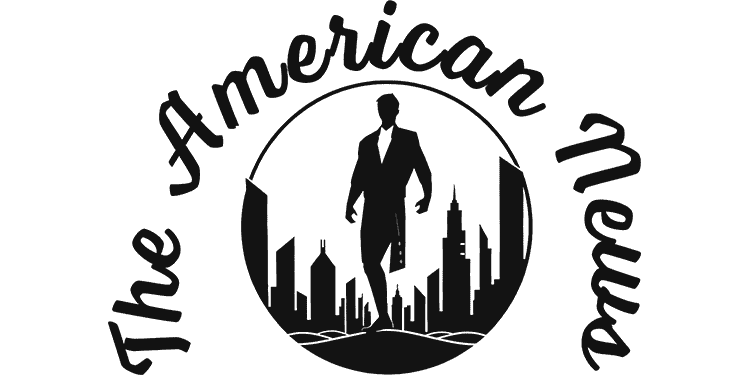Environment
Bolivia is the highest in altitude of the Latin American republics. It is a landlocked country (having lost a large amount of coastal territory to Chile during the War of the Pacific, 1879-83), bordered by Brazil on the east and the north, by Paraguay and Argentina on the south, and Chile and Peru on the west. Its geographic zones range from snow-capped Andean peaks to vast, lowland savannas and rainforests.
History
Indigenous peoples had inhabited territories spanning what is now Bolivia for thousands of years before the arrival of Spanish forces in the early 16th century. By that time, the Inca Empire was ascendant, though severely weakened by internal fighting. Forces led by Francisco Pizarro conquered the area and placed it under colonial rule. In the ensuing centuries the population, made up predominantly of Aymara and Quechua, was marginalized and exploited for labour in mines and plantations.
Despite periodic uprisings, it remained under Spanish rule until after more than 15 years of fighting the War of Independence, Bolivia was finally able to declare itself an independent state. In the ensuing years, while the country’s wealth and influence increased, the indigenous population remained severely marginalized. Their status remained largely unchanged until the 1952 Bolivian National Revolution, led by the Movimiento Nacional Revolucionario (MNR), that ushered in extensive political change including land reforms and greater inclusion of its Aymara and Quechua farmers.
Following the 1952 revolution, the MNR introduced a far-reaching agrarian reform programme, to meet the demands of Bolivia’s peasant population. The state expropriated large tracts of land from hacienda owners and distributed these to indigenous farming communities. The reforms also mobilized rural workers, incorporating them into trade union organizations and cooperatives. In addition, the MNR government gave indigenous peasants the vote (most had previously been excluded due to literacy requirements).
After the revolution of 1952, Aymara people began to migrate to La Paz in increasing numbers. Young girls found employment as live-in servants, older women became street vendors and have forged a special place for themselves in La Paz society. Many Quechua also worked in the mines of Oruro and Potosí. The fall in the price of agricultural products and the collapse of the world tin market from the 1980s meant that an increasing number of Quechua migrated to the cities, where men found work as cargo carriers. Women, who join the ranks of street vendors, were often subjected to discrimination by better established Quechua and Aymara colleagues. A more lucrative, but also more risky, alternative was to work as a pisador (treader) in one of the cocaine producing zones. Since 1952 tens of thousands of Quechua and Aymara have migrated to the lowlands where they work and live as small farmers under precarious conditions.
Aymara people have long been active in the peasant movement; the Kataristas, named after the leader of the eighteenth-century Indian uprising, Tupac Katari, started out in La Paz in the 1970s with the creation of a cultural centre and its own radio programme. This Aymara nationalist movement transformed class-based demands of indigenous peoples into ethnic-based demands; it embraced the goal of self-determination as a distinct ‘indigenous nation’ within the pluri-national Bolivian state.
During the 1970s and 1980s Bolivia was governed by a series of harsh military dictatorships with little regard for human rights. The return to democracy was hampered by economic crises and the escalation in the production and traffic of cocaine. Since US intervention in the mid-1980s (including US sponsored eradication campaigns and US trained rural patrol units), many people in the coca growing regions have been killed and injured.
Until the late 1980s land rights were governed by the 1953 agrarian reform law, which was mostly applicable to the highland regions. A resolution enacted in 1989 considered as indigenous territory the areas traditionally occupied by indigenous groups, and prohibited the allocation of this land for colonization, ranching or forestry. In 1990, in response to mass mobilization by indigenous organizations, the government agreed to review policies that could have a potentially adverse impact on the environment, and passed several decrees recognizing the ownership of specific areas of land by forest-dwelling groups.
Cattle ranching and colonization have been a major threat to the lowland groups of the department of Beni such as the Chiman and Moxeño. In September 1990, 800 members of the lowland groups walked to La Paz from the Amazonian town of Trinidad to demand recognition of land rights. As a result of that march more than 1.5 million hectares of land in northern Bolivia were recognized as indigenous territory. The relevant decrees were not, however, properly implemented, and lowland groups continued to be menaced by logging and mining concerns. During the 1990s the Confederación de los Pueblos Indígenas del Oriente, Chacó y Amazonia Boliviana played an important role in achieving bilingual education and preliminary recognition of indigenous territory.
In 1993 Victor Hugo Cárdenas – Aymara leader of one of the Katarista parties (MRTKL) – was made Vice-President of the republic. Many people criticized him for ‘selling out’ to the government. Overall, the Katarista movement proved an electoral failure, due to a lack of financial resources, weak organization at a national level, internal squabbles and an uncompromising political stance.
As a result of reforms in 1994, Bolivia’s Constitution recognized the country’s multi-ethnic and pluricultural character and included clauses on collective land rights and bilingual education. (By 2000 almost 20 percent of rural schools were bilingual.) It also recognized customary law. In addition, the reforms included the Popular Participation Law, which created 311 municipalities and immediately transferred funds to these municipalities. Such legislation led to an important shift of power at local level: in the 1995 municipal elections over 450 indigenous candidates won municipal office, making up 27 per cent of the national total.
By the municipal elections of 2004 the Movement Towards Socialism (MAS), led by ex-coca grower Evo Morales, had become the most important political party. Evo Morales frequently refers to his indigenous Aymara identity, but – in contrast to the Kataristas – does not engage in a polarizing ethnic rhetoric. MAS made common cause with diverse rural and urban popular sectors, protesting against successive governments’ neoliberal policies.
However, a landmark moment in Bolivia’s history occurred in December 2005, when Evo Morales was elected President – the country’s first indigenous leader. After taking power in early 2006, Morales embarked on a programme of extensive reform to address the deep-seated marginalization of the country’s indigenous population, provoking strong resistance from Bolivia’s traditional ruling classes. In particular, the rewriting of the country’s Constitution to provide greater empowerment to the impoverished and marginalized indigenous population, beginning in August 2006 with the formation of the Constituent Assembly, represented a major area of contention between the elite and the indigenous majority. Besides fermenting strong political antagonisms, the proposal to create a pluri-national state also brought to the fore what some see as the historical racist and xenophobic underpinnings of the ethno-cultural and geographical divide between eastern and western Bolivia.
Since his election more than a decade ago, Morales has enjoyed a period of unbroken rule. While there have been many positive outcomes during this period, including many positive steps for the minority and indigenous population, problems of poverty and discrimination have persisted. In particular, the government’s recent granting of extractive concessions on communal land has triggered protests from communities who had hoped that under Morales they would secure full territorial autonomy. Morales, having secured re-election in 2009 and 2014, is currently scheduled to end his term in 2020 following the next elections in 2019. A 2016 referendum saw his bid to amend the Constitution to allow for a fourth term rejected by popular vote. However, his party is reportedly planning to nominate him as their candidate in the next election in spite of this.
Governance
Bolivia has some of the highest levels of poverty in South America, and it also stands out as one of the most culturally diverse countries in the region with one of the highest percentages of indigenous people in Latin America – over 40 per cent of the population. Yet indigenous communities have nevertheless struggled historically to secure equality. In this regard, constitutional reforms in 2004 acknowledging the ‘multi-ethnic and multicultural’ nature of the republic therefore represented a milestone for the community, particularly its recognition of their right to full and effective political participation.
Bolivia also has one of the most progressive legislative systems to support indigenous peoples and the first indigenous President in the region, Aymara leader Evo Morales. Following his inauguration in 2006, his government passed a number of major reforms, including in 2009 a new Constitution that recognizes that indigenous territories comprise ‘areas of production, use and conservation of natural resources, and spaces of social, spiritual and cultural expansion’. The following year, Bolivia passed Law 061: the André Ibañez Framing Law of Autonomy and Decentralization, an ambitious piece of legislation that aims to provide some degree of autonomy to local institutions and recognizes the pre-existence of native communities. These and other measures all reflected the promises Morales made to end the marginalization of the country’s indigenous population, a strategy that brought him two further campaign victories in 2009 and 2014, making him the longest-serving President in Bolivia’s history.
However, President Morales’ attempts to negotiate a constitutional amendment to allow him to serve an additional term beyond his third term, set to expire in 2020, was rejected by popular referendum in 2016, amid concerns about extending his authority further beyond the limits set out by the 2009 Constitution. According to its provisions, any president cannot exceed a maximum of two terms in office. Morales was only able to run for his third term after a 2013 ruling by the Bolivian Constitutional Court that his first term, which began before the approval of the new Constitution, did not apply. However, his Movement for Socialism Party has announced Morales as their 2019 candidate despite the ruling, triggering protests from the political opposition.
In 2007, Bolivia became the first country to introduce the United Nations Declaration on the Rights of Indigenous Peoples into local law. The new Constitution, formally approved in 2009, provides for the development of a comprehensive legal framework. One of the most prominent laws is the 2010 Law against Racism and All Forms of Discrimination, also known as Law 045, which criminalizes a range of racist or discriminatory actions, including violent incitement and the dissemination of racist or discriminatory material through media and other means. This legal instrument was welcomed among indigenous communities and came after years of advocacy by NGOs and the UN Committee on the Elimination of Racial Discrimination. It has been publicly commended by UN representatives since its approval. Following its passing, Article 281 of the Bolivian Penal Code was also amended to include hate speech.
Source link : https://minorityrights.org/country/bolivia/
Author :
Publish date : 2017-08-08 11:11:22
Copyright for syndicated content belongs to the linked Source.










